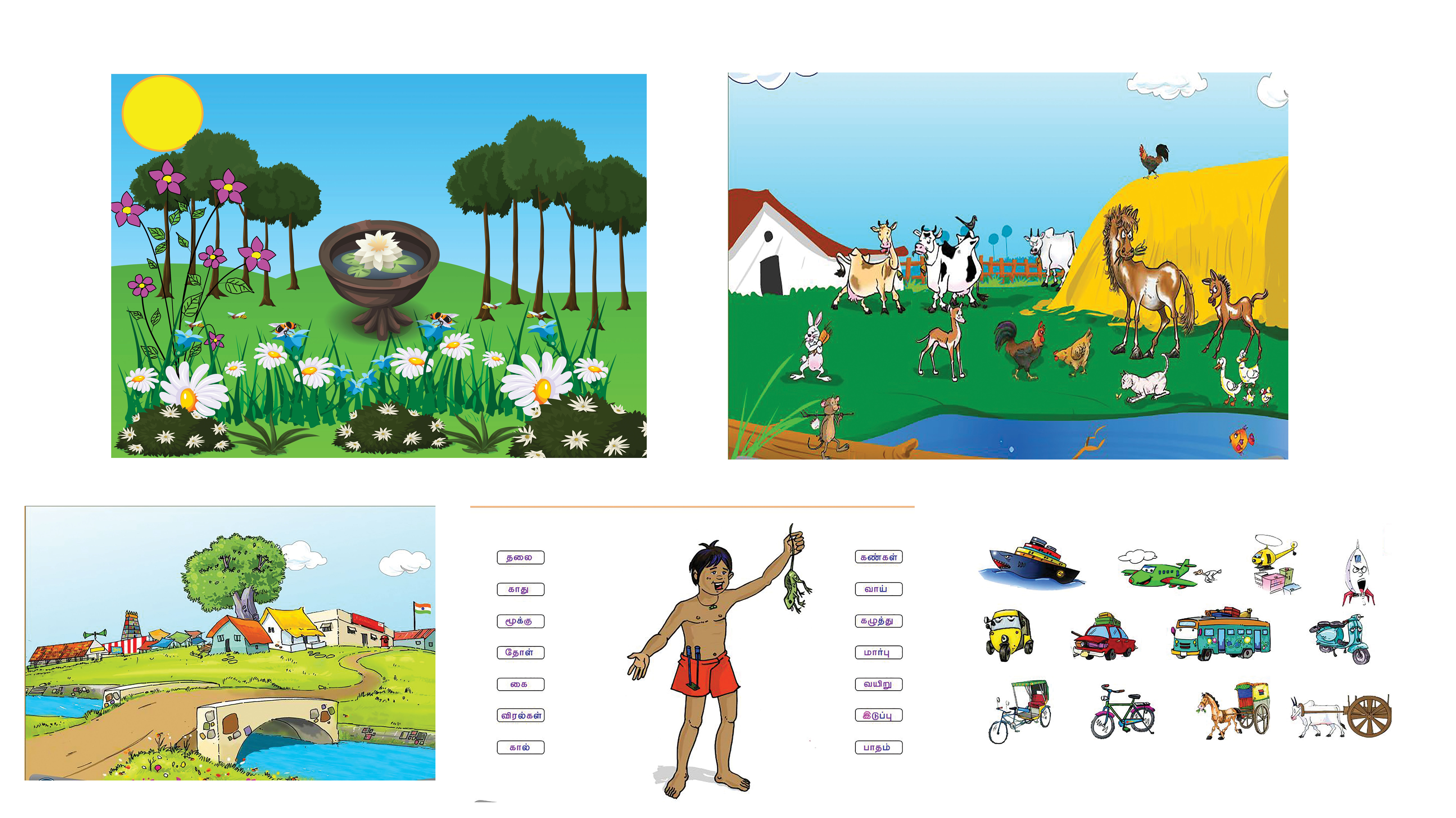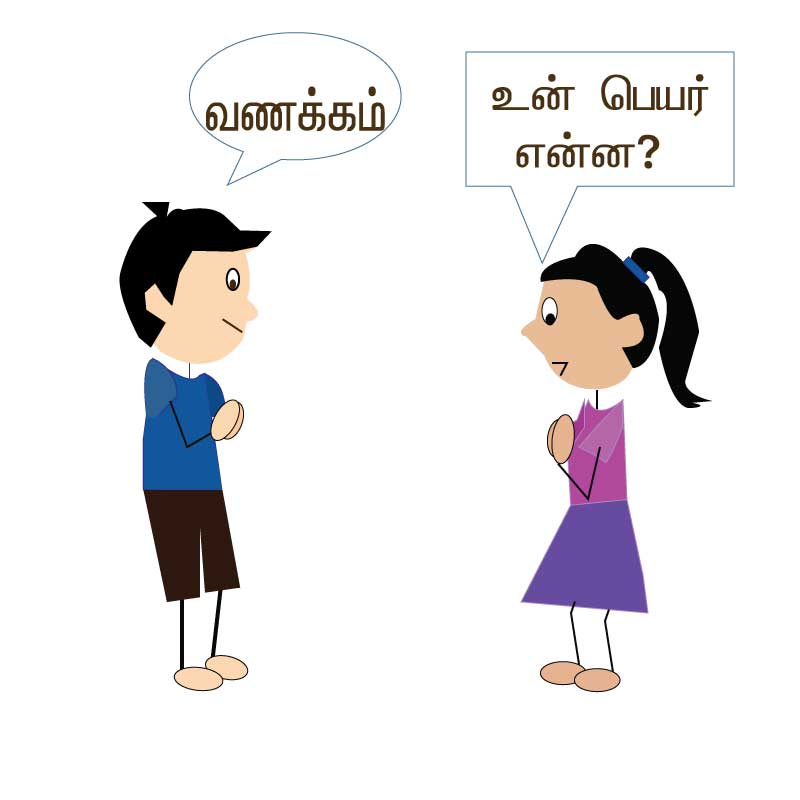தன்மை ஒருமை காலம் காட்டும் இடைநிலைகள்
தன்மை பெயர்சொற்களாகிய நான், என், ஆகியவற்றையும் அவை வேற்றுமை உருபுகளால் எப்படி மாற்றம் அடையும் என்பது ஒரு அறிமுகமாக சொல்லப் பட்டது. இதுவரை தன்மை முன்னிலை ஆகிய இரு இடங்களையும் ஒருமையின் அடிப்படையில் அறிமுகப் படுத்தப் பட்டது.
ஒரு பெயர்ச்சொல்லினால் தன்மை இடம் எப்படி குறிக்கப் படுகின்றனவோ அதே போல ஒரு செயலோடு இணையும் வினைமுற்று விகுதி இடைநிலைகள் ஒரு பொருட்பெயரின் எண்ணிக்கை, அதன் செயல்படும் காலத்தை உணர்த்த பயன்படுகின்றன. இங்கு தன்மை முன்னிலை இடங்களுக்கான ஒருமை விகுதிகளையும் அவை எவ்வாறு காலங்களைக் காட்டுகின்றன என்பதையும் பார்க்கலாம்
கால இடைநிலைகள்
தன்மை ஒருமை பெயர்ச்சொல்லின் செயல்களுக்கு காலம் காட்டும் இடைநிலைகள் “கிறு” “கின்று” “இன்” “த்” “ப்” “வ் ஆகியவை
ஒரு சொல்லின் இறுதியில் வரும் இடைச்சொற்கள் விகுதிகள் என்று அழைக்கப்படும்.
தன்மை ஒருமை விகுதிகள் மொத்தம் மூன்று/
“அன்” “என்” ஏன்”
இந்த மூன்று விகுதிகளில் “அன்” “என்” என்ற இரண்டு விகுதிகளும் செய்யுளில் மட்டுமே பயன் படுத்தப் படுகின்றன. “ஏன்” என்ற விகுதியே இன்று வழக்கில் உள்ளது
நான் என்ற தன்மைப் பெயர்சொல்லுக்கு காலம் காட்டும் இடைநிலையும் எண்ணிக்கையைக் காட்டும் இடைநிலையும் படி ஓடு என்ற இரு வினைகளோடு சேர்ந்து எப்படிச் செயலாற்றுகிறது என்று எடுத்துக் காட்டுகள் விளக்கம் தரும்..
நான் படித்தேன்
நான்+ படி+த்+ஏன்= நான் படித்தேன் நான் படித்தேன்
நான் படிக்கின்றேன்
நான் + படி+கின்று+ஏன்= நான் படிக்கின்றேன்
நான் படிப்பேன்
நான்+படி+ப்+ஏன்= நான் படிப்பேன்
அடுத்த வினை ஓடு
நான் ஓடினேன்
நான்+ஓடு+இன்+ஏன்=நான் ஓடினேன்
நான் ஓடுகின்றேன்
நான்+ஓடு+கின்று+ஏன்= நான் ஓடுகின்றேன்
நான் ஓடுவேன்
நான் +ஓடு+வ்+ஏன்=நான் ஓடுவேன்
http://www.youtube.com/watch?https://youtu.be/d4F3T2iu-Vk
The first person tense and count
The first person nouns I(நான்) and Me (என்) can only show the tense and the count through verbs. The in-between words are the connecting characters that change the verb appropriately.
“கிறு” “கின்று” “இன்” “த்” “ப்” “வ்
For the first person singular the ending in-between words are “அன்” “என்” ஏன்“
The following verb படி(read) ஓடு(run) examples will show how the verb changes.
நான் படித்தேன்= I read
நான்+ படி+த்+ஏன்= நான் படித்தேன்
நான் படிக்கின்றேன் I am reading
நான் + படி+கின்று+ஏன்= நான் படிக்கின்றேன்
நான் படிப்பேன் I will read
நான்+படி+ப்+ஏன்= நான் படிப்பேன்
The next word
நான் ஓடினேன்
நான்+ஓடு+இன்+ஏன்=நான் ஓடினேன்
நான் ஓடுகின்றேன்
நான்+ஓடு+கின்று+ஏன்= நான் ஓடுகின்றேன்
நான் ஓடுவேன்
நான் +ஓடு+வ்+ஏன்=நான் ஓடுவேன்




You must be logged in to post a comment.